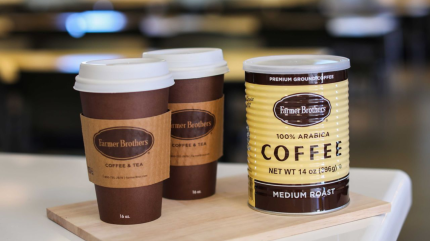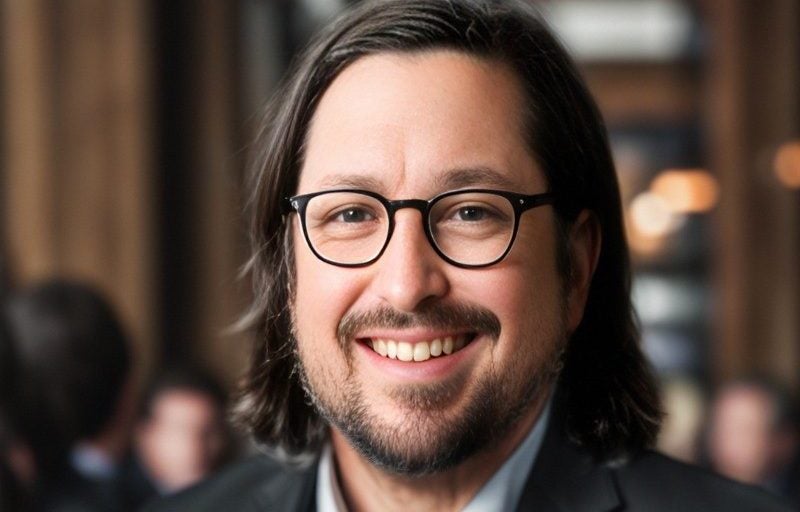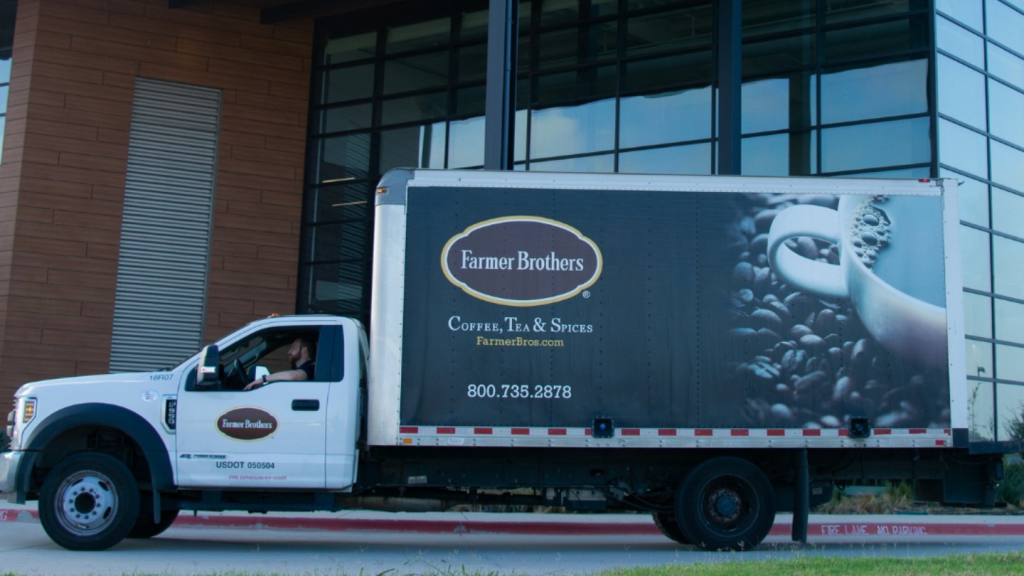
Farmer Brothers is a US-based coffee roaster, wholesaler and foodservice distributor of coffee, tea and some food products, with coffee comprising around half of the business’s sales. Last July, it sold a coffee facility in Northlake, Texas, and its non-direct store-delivery coffee business, known as Direct Ship to private-label manufacturer TreeHouse Foods for $100m.
In the opening half of its fiscal 2024 since the sale, Farmer Brothers has slowly been turning around its performance, with adjusted EBITDA turning to a positive $2.3m in the second quarter compared to a loss of $2.2m the year before. Six-month sales were $171.3m, up from $168.7m a year earlier.
Matthew Swenson was hired in March as the vice president of coffee operations at the Texas-based company, adopting some of the previous CEO’s roles amid a time of change at the company’s helm. He previously served as the director of coffee at Nestlé.
Just Drinks sat down with Swenson to discuss how Farmer Brothers is looking to streamline the business, what consumer trends to keep an eye on and sustainable practices in the supply chain.
Henry Mathieu (HM): How have your first couple of months been at Farmer Brothers?
Matthew Swenson (MS): I just joined the end of February, early March, and just been getting my feet fully under me the last couple of weeks. But in Farmer Brothers, it’s the vice president of coffee operations and that’s a relatively large scope: not only do we look at the quality of the coffee, the sourcing of the coffee and green coffee procurement side of things, it’s also looking at the R&D and innovation pipeline, and then overseeing our manufacturing site here in Portland, Oregon as well.
HM: Can you break down the structure of the business and how it operates?
MS: It’s interesting, right? It’s a relatively neat business model in this day and age. In July 2023, we sold off our direct ship business, our national account business, to TreeHouse Foods. What that has really allowed us to do is kind of step back and take full inventory and stock of our direct-store-delivery business.
How well do you really know your competitors?
Access the most comprehensive Company Profiles on the market, powered by GlobalData. Save hours of research. Gain competitive edge.

Thank you!
Your download email will arrive shortly
Not ready to buy yet? Download a free sample
We are confident about the unique quality of our Company Profiles. However, we want you to make the most beneficial decision for your business, so we offer a free sample that you can download by submitting the below form
By GlobalDataWhen I say it’s a unique business model, we have 80 distribution centres all across the country that service our customers, which is roughly 30,000 customers and 250 routes across the country. By having these localised distribution centres, we’re able to service these customers in a really personalised way. For us, it’s about getting back to the basics and building the efficiencies and streamlining those operations. And then where my role fits into that is really looking at the production schedules, making sure we’re making this factory here as efficient as possible, maintaining the highest quality to be able to service those customers that way.
HM: How exactly are you looking to streamline the business?
MS: There’s no doubt we’ve been right-sizing the business but, at the end of the day, when you have 80 distribution centres throughout the country, inventory management is a big piece of that, and maintaining inventory levels. One of the other pieces is we’ve been in service for 110 years and a lot of that growth has been through merger and acquisition, most notably in the last two decades.
With that, we’ve bolted on several brands throughout the years as we’ve continued to grow through acquisition. By streamlining and optimising what I mean is what we’re doing is taking a new approach, a fresh approach to our brand strategies. Where previously we’ve had anywhere from 12 to 15 different brands, now within our portfolio, we’re really looking at the end customer with an eye on the end consumer and looking at how we can provide the most amount of value for them. By doing so, we’re creating this brand pyramid in streamlining all of our brands down to about three to five.

By doing this, we can create these really clear value propositions for our customer base. Thinking about the traditional tier, which is more of a value-driven piece, and then we have our brand Boyd’s which is a little bit more on the premium side, a little higher-quality, more brand-focused. Then we’re looking towards a specialty brand as well to deliver on the delicate nuances of coffee and really highlight our direct trade relationships that we’ve been able to build on for decades.
HM: Is M&A still a big part of Farmer Brothers’ growth strategy?
MS: I think right now we’re ultimately focused on right-sizing the business and focusing on the basics, to rebuild and really get the direct-store-delivery business to where we’d like to see it. That’s where we’re ultimately focused on right now. Not to rule anything out or anything but that’s where the primary focus is.
HM: What consumer trends are driving a surge in premium and speciality coffee?
MS: I think two different areas. I mean, I think this is where my background comes into play quite nicely in some of these. Firstly, it’s the younger generation. Over the last several years, it’s been all about the millennial but now we’re having our sights on Gen Z, which is entering the workforce for the first time and their disposable and discretionary income is coming to market. They are a highly engaged consumer base. And so that’s where we’re looking at some of the specialty sides of things to capitalise on some of these trends.
And then you look at liquid coffee. This has been talked about as a fad for the past ten years, right? And so, I think data in history has proven this is much more of a long-tail trend. We already have some great innovation in the liquid coffee space where I think, as we develop our focus on our innovation pipeline, we’ll certainly be looking towards the younger generation with the higher-quality coffees.
HM: How will you appeal to the wider consumer with fewer offerings?
MS: I think you always see those healthy dynamics within the business and consumer side. I think what we’re looking at right now is, you know, currently, we have a significant amount of volume already in this space. However, what we want to look at doing is streamline those brands and creating that brand offering. And so, with the line-up of products that we’ll come out with, I think we’ll be well-positioned to capture as many of those consumers as possible with different offerings like single origins coffee at variable price points.
We need to be meeting the end consumer where they are to ensure there’s a product for them. When you have this number of brands and a spectrum of quality, we’re able to really tailor the coffee in the value positioning to multiple brands segments, and I think that’s where, for us as a business, we’re really looking at how do we do that in the most optimum way? And that’s the fun part right now.
HM: What is the main focus behind the three new tiers of quality coffee?
MS: We don’t talk too much about our pipeline before it’s completed. However, you can look to my past and can probably, you know, connect some dotted lines on where we’ll be looking. But ultimately, I think we’re focusing right now is on our liquid coffee concentrate for Boyd’s, which is our premium tier brand. Then we’re also really focusing on the shot. We’re a master distributor for a shot brand, which is an all-natural flavour of syrup and so really playing into the trends of the younger generation with a more colourful beverage experience, more transparent ingredients, clean labels and things like that. That’s where we are today. Then we’ll align the future product portfolio or innovation pipeline to meet the various consumer bases that we plan on going after.
HM: Has the diversification of coffee formats in recent years changed the market for the better, would you say?
MS: Yeah, certainly, it’s a little bit more complex with the different formats. Back in the day, it would have primarily been driven on ground and whole bean. Now, we effectively have the market broken into thirds. When you look across all stores and convenience you have ground and whole bean, take-out or single-cup serve, and then you have RTD and then you know, 5% or so has always been soluble.

When you look at that, it’s really meeting the consumer where they are, whether they have a single-cup machine and they prefer soluble, or they like this specialty coffee. I think that’s the interesting part about how the industry has evolved: more niches mean more opportunity to find and develop out and play to the consumer where they are today.
HM: How is Farmer Brothers looking to be sustainable in its coffee procurement?
MS: I think this is where our strength in history comes into play with such a historic company in 110 years, we’ve been able to build a lot of these relationships over the last decades and maintain a lot of those. Through a good size of our portfolio, we do have direct relationships in over ten countries all across the world, or we have a direct trade project that is leveraging those relationships and so that’s been a key element to that.
However, one of the things that we found is we’ve never really leveraged a lot of the great work we’re doing in origin. And so again, when we think back to rebuilding some of the basics, and in this brand portfolio work, this is where we’re going to really put some of the direct-trade relationships forward and really leverage and talk about some of those great projects that we’ve been able to make some impact with and continue to make some impact.
And then, as far as the broader portfolio goes, I think, although the challenges are always high, there’s never really been a better time to think sustainability in coffee because there’s a lot of energy and a lot of partners around there globally that can help streamline on the monitoring and evaluation front. We look to fine-tune our overall strategy there for the remainder of the portfolio. I think we’re in a really good position to be able to have a healthy strategy for our entire portfolio as we look to build in the future.
HM: What would you say is the biggest challenge facing US coffee at the moment?
MS: The biggest challenge is this segmentation of consumers and finding the right solution for the right consumer at the right time. With all the different consumers out there looking at a value play, looking at transparent ingredients, certified organics, all of these different things then it’s always a challenge to find your consumer base and go after it.
I think that’s the exciting thing about our set-up currently with our different brand pyramid. Our portfolio of offerings is really set up to answer that. For us, the challenge is building and maintaining that strategy to do so. I’m confident we’re on that path to be able to answer the questions of a broad range of consumers in this complex market – but that’s the challenge and the exciting part, right?
I’ve spent my whole career in coffee and these sorts of challenges are incredibly fun to go after and attack and this is such a uniquely positioned company just historically and, more notably, where we are today exactly. There’s a lot of opportunity to go after some of these more complex challenges with our business model.


